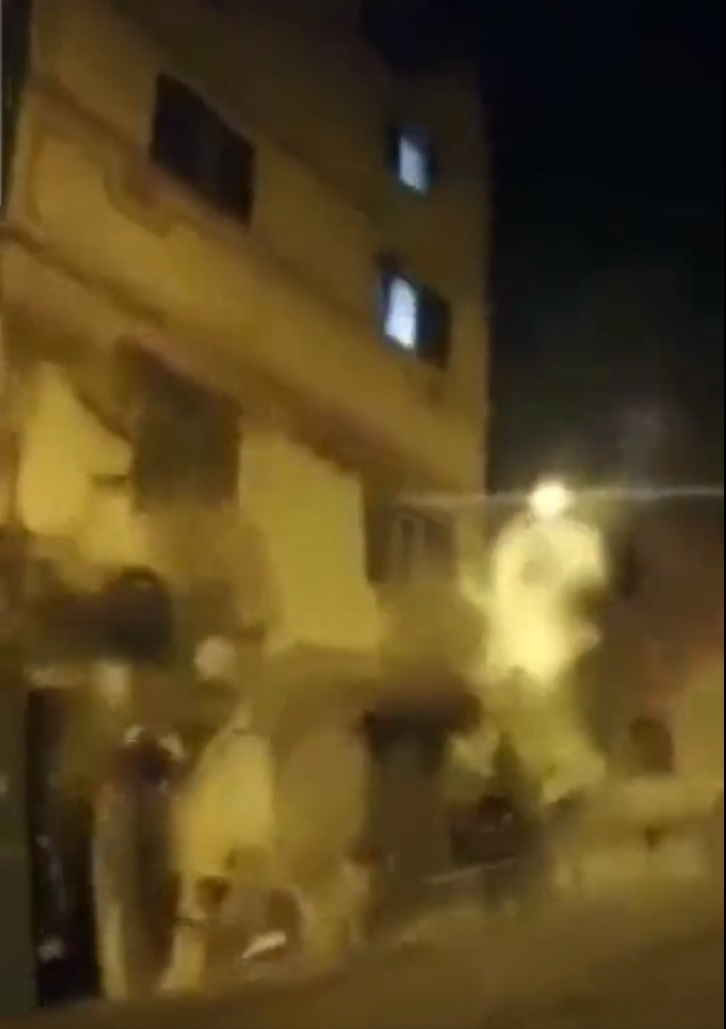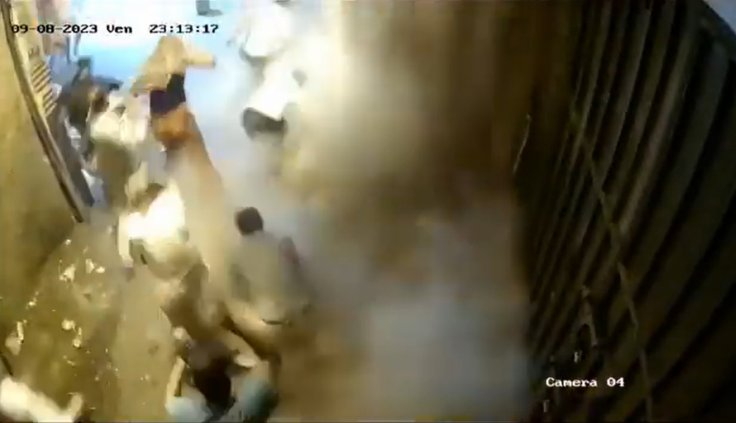A powerful earthquake of magnitude 6.8 on the Richter scale hit central Morocco, killing nearly 300, the nation's interior ministry said. According to reports, 296 people are confirmed dead and more than 150 have been injured in the biggest earthquake to hit the country in more than 120 years.
Videos shared on social media showed a massive cloud of dust ascending over Marrakech, which is both a UNESCO World Heritage Site and a hugely popular tourist destination. The cloud formed as a building collapsed, causing frightened tourists to flee in panic. Other videos show bodies lying on the streets covered in bricks and dust.
Midnight Mayhem

Other video clips showed people attempting to rescue someone trapped in the debris, armed solely with flashlights and their own hands. Other videos depicted Moroccans appearing bewildered and in distress, with tears in their eyes, and blood flowing from head injuries.
According to AFP, hospitals in Marrakech saw a massive surge in injured people. The earthquake, measuring 6.8 on the Richter scale, hit Morocco's Atlas Mountains and generated tremors reaching as far as Portugal.
🚨#BREAKING: Horror scenes after the earthquake at Morocco in the region of Marrakech 🇲🇦#هزة_أرضية #المغرب #زلزال #زلزال_المغرب #Morocco #مراكش pic.twitter.com/AfvinPRycO
— AkramPRO (@iamAkramPRO) September 9, 2023
Morocco's Interior Ministry confirmed a death toll of at least 296 in the provinces near the earthquake's epicenter, with an additional 153 people sustaining serious injuries. The epicenter itself was located 40 miles to the south of Marrakech.
The ministry wrote that the majority of the damage took place in rural areas rather than urban centers. The United States Geological Survey cautioned that the death toll was expected to increase significantly since rural structures were not constructed to withstand such powerful earthquakes.
Moroccan residents shared videos that show buildings reduced to rubble and dust, along with sections of the iconic red walls encircling Marrakech's historic city, which suffered damage.
🚨 #BREAKING | #Morocco | #earthquake | #Marrakech |#الزلزال | #المغرب
— Bot News (@BotNews18) September 9, 2023
The moment a building completely collapsed following the earthquake that struck Morocco a short while ago. pic.twitter.com/9n22NfiC8F
Tourists and others uploaded videos depicting scenes of people in distress, evacuating restaurants in the city amid the backdrop of pulsating club music, accompanied by screams of panic.
Information regarding the extent of damage and casualties following earthquakes, especially those occurring during nighttime hours, typically takes time to become available.

Instead of going back to their concrete structures, people, including both adults and children, chose to remain outdoors in the streets due to concerns about potential aftershocks and other tremors that might result in their homes shaking or collapsing.
Killed in Their Sleep
The initial assessment by the U.S. Geological Survey said that the earthquake had a preliminary magnitude of 6.8, hitting just after 10 pm, and the shaking lasted for several seconds.
A terrifying moment of a collapse captured by a security camera#Maroc #moroccoearthquake #Morocco #earthquakemorocco #earthquake pic.twitter.com/9aeA7XsmoS
— Kinetik (@KinetikNews) September 9, 2023
Morocco's National Seismic Monitoring and Alert Network, on the other hand, registered it as a magnitude-7 event on the Richter scale. Additionally, the U.S. agency reported an aftershock with a magnitude of 4.9 occurring 19 minutes later.
Discrepancies in early measurements are typical, but either reading would mark one of the most powerful earthquakes Morocco has experienced in recent years.

While earthquakes are not common in North Africa, there was a significant event in the past. In 1960, a magnitude 5.8 earthquake struck near Agadir, killing thousands of people.
"Earthquakes of this size in the region are uncommon, but not unexpected," said the USGS.
"Since 1900, there have been no earthquakes M6 (magnitude 6) and larger within 500 km of this earthquake, and only 9 M5 (magnitude 5) and larger earthquakes."
Morocco earthquake pic.twitter.com/Krv4awedBB
— Nerdy 🅰🅳🅳🅸🅲🆃 (@Nerdy_Addict) September 8, 2023
The USGS predicted that "significant damage is likely and the disaster is potentially widespread', noting that many people in the area reside in structures that are 'highly vulnerable to earthquake shaking."
The epicenter of Friday's earthquake was high in the Atlas Mountains, around 43.5 miles to the south of Marrakech. Notably, it was in proximity to Toubkal, which is the highest peak in North Africa, as well as Oukaimeden, a popular Moroccan ski resort.

The USGS reported that the epicenter was located 11 miles beneath the Earth's surface, while Morocco's seismic agency indicated it was at a depth of 5 miles.
🚨🇲🇦People are outside after the terrifying 7.1 earthquake in all Moroccan cities. 😥 PRAY FOR MOROCCO!#earthquake #seisme #زلزال_المغرب pic.twitter.com/wAwLEKGJrs
— AkramPRO (@iamAkramPRO) September 9, 2023
The quake's effects were felt as far away as Portugal, as confirmed by the Portuguese Institute for Sea and Atmosphere, and in Algeria, according to Algeria's Civil Defense agency, which oversees emergency response.









